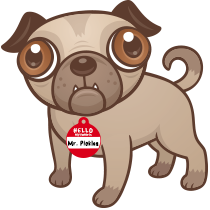
AdPlugg just launched a new content targeting feature that allows you to target your ads based on the Open Graph tags on your pages. This allows you to target ads to specific topics, sections, tags, etc. The new Open Graph targeting feature is available to all Pro Plan subscribers.
The Open Graph targeting feature is especially useful if you don’t include the category of the article or post in the page’s url. For instance, using AdPlugg’s Page Targeting feature, you have long been able to target ‘sports’ related ads to a url such as ‘http://www.example.com/sports/tennis/wimbledon-2017’ (based on ‘/sports/’ being in the url). However, if you’ve structured your urls in a flat format (such as ‘http://www.example.com/wimbledon-2017’), there was previously no way to target ‘sports’ (or ‘tennis’) related ads to the article. With Open Graph targeting, AdPlugg can now look at your Open Graph meta tags, and for this kind of targeting, the URL doesn’t matter.
So What Exactly are Open Graph Tags?
Open Graph tags are meta tags that you add to the header of your site’s pages. They are used to describe the content of the page.
Below is an example of Open Graph tags that indicate that the page is in the ‘sports’ section/category and that it has been tagged with ‘tennis’ and ‘wimbledon’.
<head>
<meta property="article:section" content="sports"/>
<meta property="article:tag" content="tennis"/>
<meta property="article:tag" content="wimbledon"/>
...
<head>Though the Open Graph protocol defines a large number of different tags, AdPlugg has specifically added support for the article:section tag and the article:tags shown above.
If you want, view the source of this page to see what Open Graph tags it uses.
How do I add Open Graph tags to my site?
There is actually a good chance that your site is already using Open Graph tags. To check, right click on one of your pages and look for tags that look something like the ones shown in the example above.
The AdPlugg Blog runs on WordPress. We use the Yoast SEO plugin which adds Open Graph tags automatically to all of our posts. The article:section tag that it adds corresponds to the Primary Category that we pick for each post. The plugin also adds an article:tag tag for each of the WordPress Tags that we assign to the post.
The Yoast SEO plugin is just one of over a dozen different WordPress plugins that you can use to add Open Graph tags to your WordPress site.
But I don’t use WordPress!
Don’t use WordPress? No sweat! Open Graph is a standard that has no tie to any particular CMS. There are plugins available for all major CMS systems that allow you to easily (and often automatically) add Open Graph tags to your pages.
Targeting Your Ads and Placements by Open Graph Tag
We’ve added two new subsections to the Page Targeting settings on both the Ad form and the Placement form. One subsection is for “Section Targeting” and the other is for “Tag Targeting”. We’ve renamed the general “Page Targeting” settings to “Path Targeting to better describe how they target the ‘path’ part of the URL.
Once you’ve ensured that Open Graph tags are on your pages, you can use the new Section Targeting and Tag targeting fields to target ads to the page. There are instructions for how to use the settings directly below the fields themselves.
You can tell AdPlugg to target sections or exclude sections, you can also target or exclude pages that aren’t part of a section. The sections can also include wildcards (such as ‘sports-*’).
With “article:tag” targeting, you enter any number of tags and choose whether you want to have your list be the tags that are included or excluded.
We plan to add support for additional Open Graph tags in the future. Some of the ones that we are specifically eying are og:locale (which would allow targeting based on the page’s intended country and language) and og:site_name (which, of course, would allow targeting based on the name of the site). You can see the complete list of Open Graph tags at ogp.me.
Have a question about how to add Open Graph tags to your site, how to target your ads based on your Open Graph tags, or anything else? Post it to the comments section below!


Leave a Reply